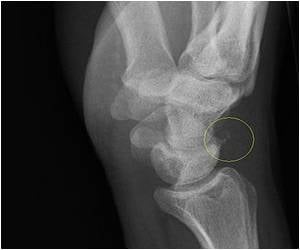Researchers from University of Rochester Medical Centre have identified key details of how rheumatoid arthritis (RA) destroys bone.
Researchers from University of Rochester Medical Centre have identified key details of how rheumatoid arthritis (RA) destroys bone.
In rheumatoid arthritis, the body's disease-fighting immune cells mistakenly identify parts of a person's body as foreign invaders, similar to bacteria, and produce chemicals to destroy them.The immune chemicals called tumour necrosis factor alpha (TNF alpha) are known to play a central in the autoimmune disease. It increases the production of immune cells and chemicals as part of the body's response to disease.
When overproduced in RA patients, TNF alpha signals for the destruction of cartilage and bone.
TNF alpha also influences bone mass. Human bone is continually regenerated to maintain strength. Under the control of signaling molecules, which include TNF alpha, two cell types, balanced against each other, make bone recycling possible.
Osteoclasts break down aging bone to make way for new bone, while osteoblasts build new bone at the sites where osteoclasts have removed it.
The research team found that TNF alpha decreases the number of bone-building osteoblasts, through an enzyme called Smad Ubiquitin Regulatory Factor 1 (Smurf1), which in turn shuts down two proteins that would otherwise drive bone-building.
Advertisement
Bone volume and strength of both groups of mice were then examined using a combination of imaging technologies and were compared.
Advertisement
Both Smad1 and Runx2 signalled to increase the number of bone-building osteoblasts, but only if Smurf1 was present to pass on the signal from TNF alpha.
"The significance of our study is that it identifies SMURF1 as the signalling partner through which TNF does damage in RA-related bone loss," said Xing.
"That has enabled researchers to begin designing small molecule drugs to shut down the action of Smurf 1 and its relatives," Xing added.
The study is published in the Aug. 22 edition of the Journal of Biological Chemistry.
Source-ANI
SPH













